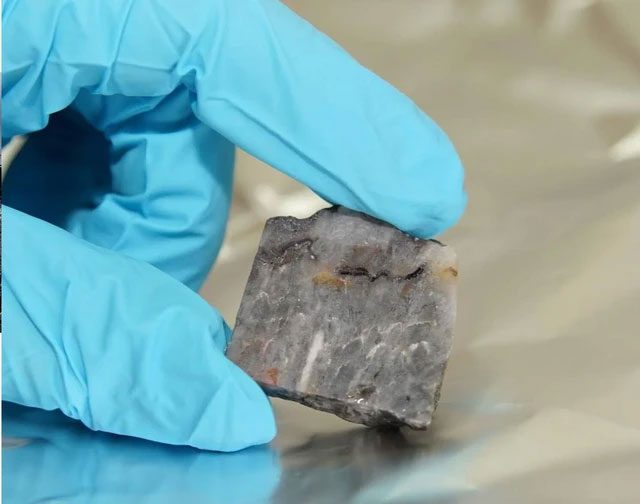The mysterious world 3.5 billion years ago, home to the planet’s earliest living organisms on a lost supercontinent, has just been unveiled.
A new study published in the journal Precambrian Research has discovered remnants of biomass from 3.5 billion years ago in the Dresser Formation in Western Australia, enhancing humanity’s understanding of the earliest life forms on Earth.

An ancient rock slab containing traces of 3.5 billion-year-old organisms – (Photo: University of Göttingen, Germany).
According to Heritage Daily, this area belongs to the ancient Pilbara Craton in Western Australia, which is the continental crust that has existed since the Archean Eon, approximately 3.8 to 2.7 billion years ago.
These ancient rock slabs may be part of the supercontinent Vaalbara or the continent Ur, which has long since disappeared after multiple instances of continental mergers and separations throughout Earth’s history.
A research team from the University of Göttingen in Germany analyzed barium sulfate—specifically barite—from the Dresser Formation, which allowed them to identify tiny particles in the rock sample that are traces of living organisms.
These particles likely settled as sediments in water between ancient volcanic craters, while some particles were transported and altered by hydrothermal water in the volcanic activity zone.
By analyzing carbon isotopes, the researchers demonstrated a world filled with various forms of microorganisms that existed in the vicinity of this volcanic region.
This world resembles the ecosystems found today in the scalding hot springs of Iceland or the hot springs in Yellowstone National Park in the United States.
This discovery further indicates that warm groundwater, rich in minerals from beneath the Earth’s surface, served as a habitat for early life, from the ocean floor to ancient continents.
Furthermore, the richness of this 3.5 billion-year-old biomass suggests that life had already begun on Earth for some time and was considerably diverse by several hundred million years after the start of the Archean Eon.
Previous studies suggest that life on Earth may have begun around 4.1 to 3.8 billion years ago, at the end of the preceding Hadean Eon or at the transition between Hadean and Archean.


















































